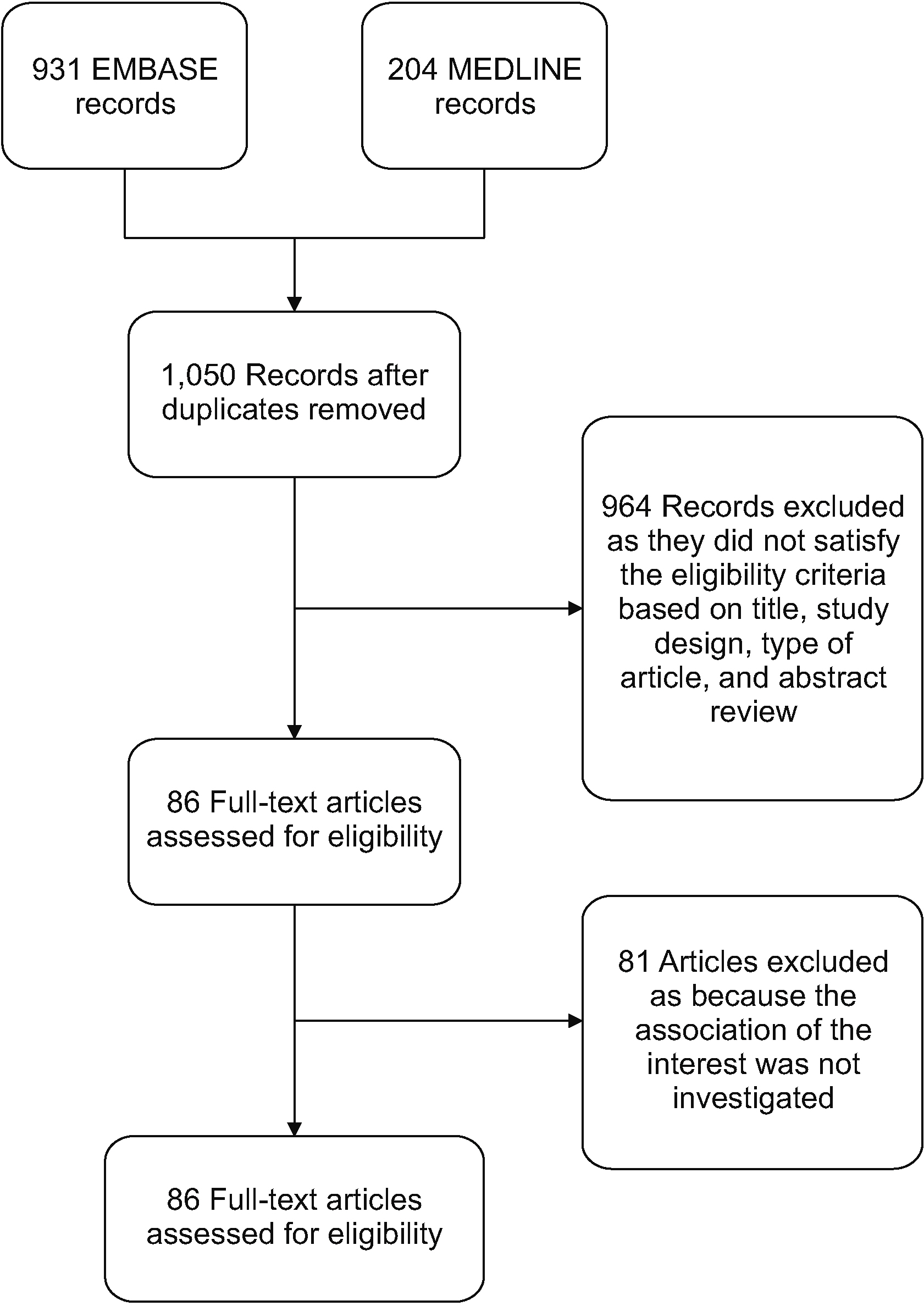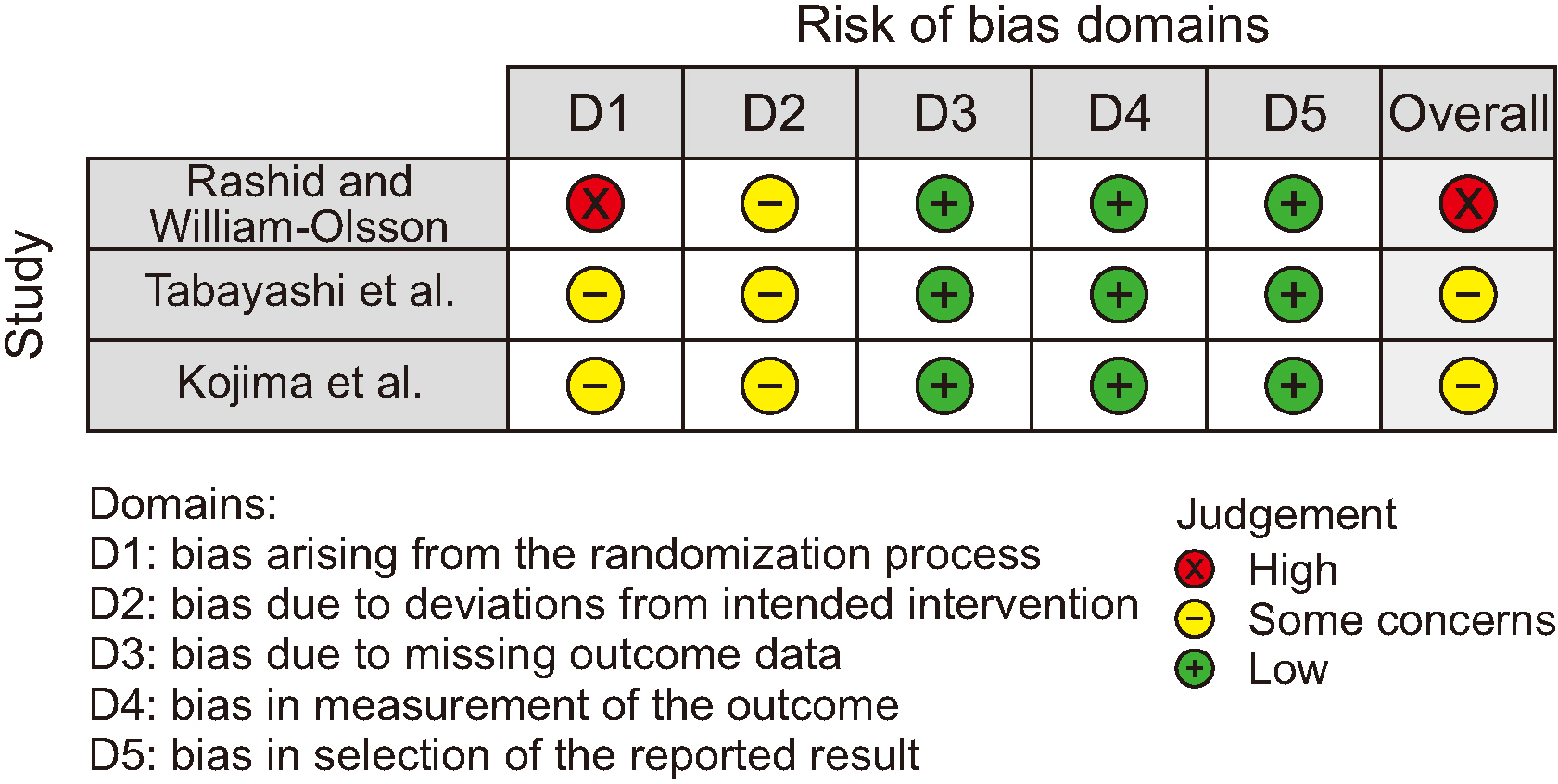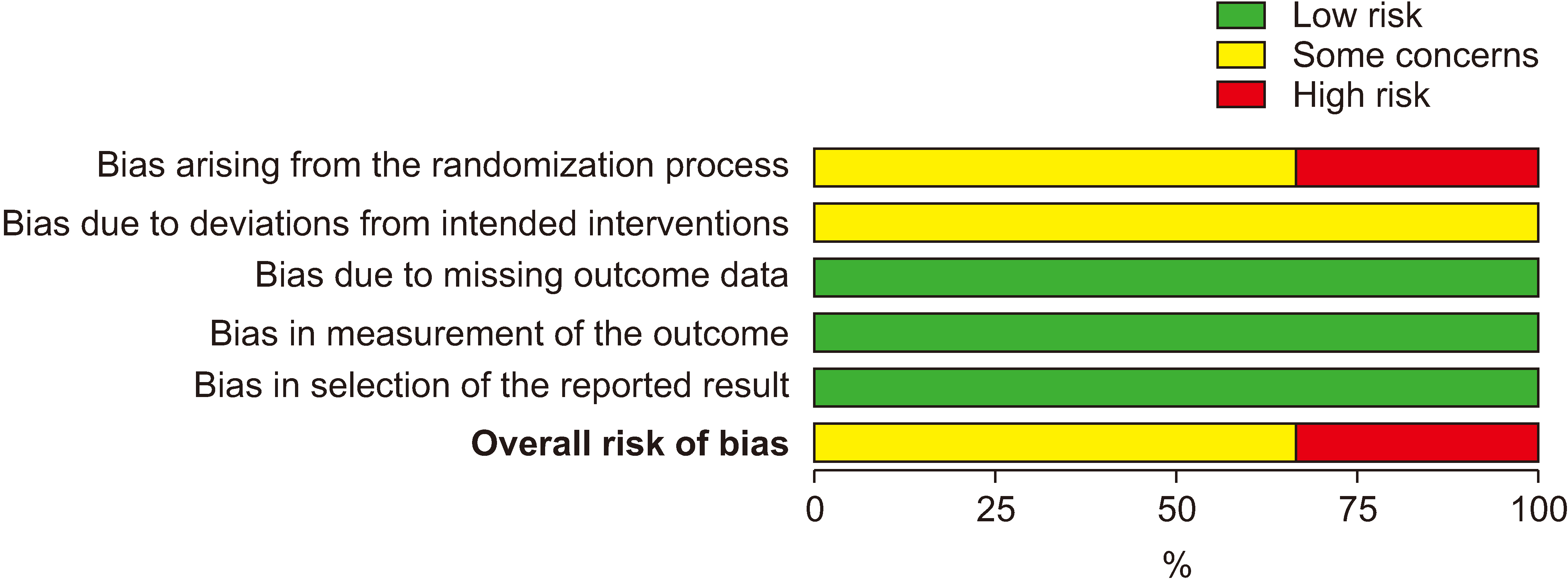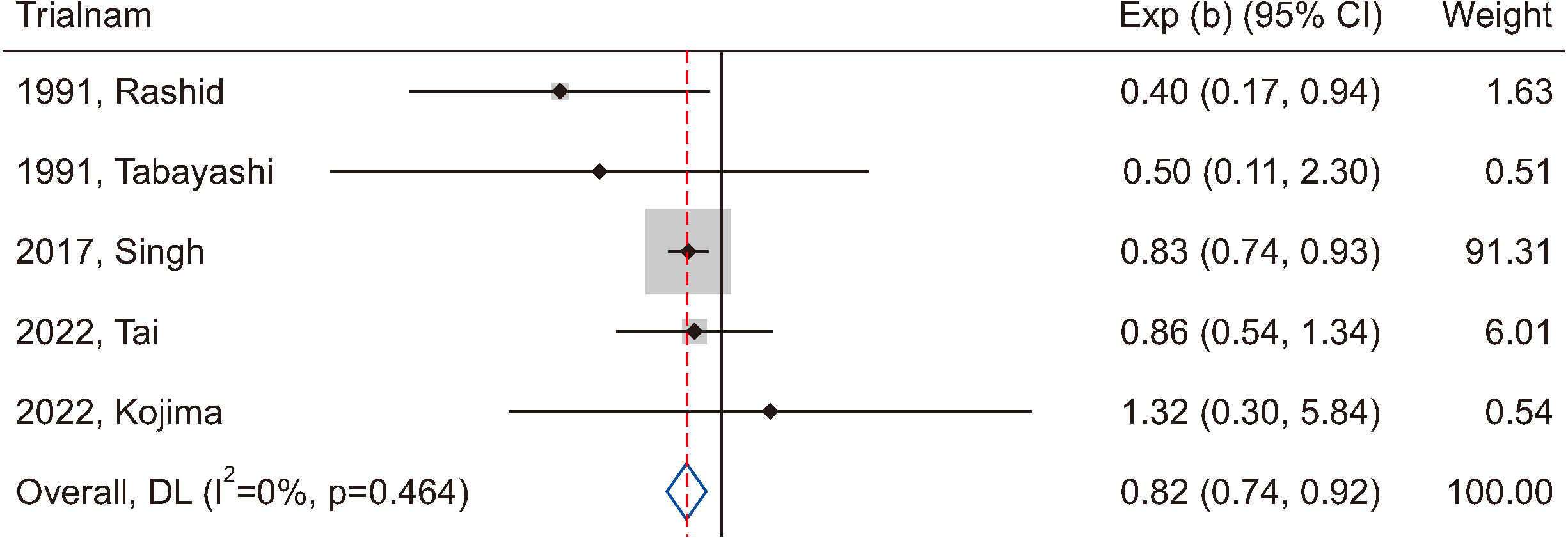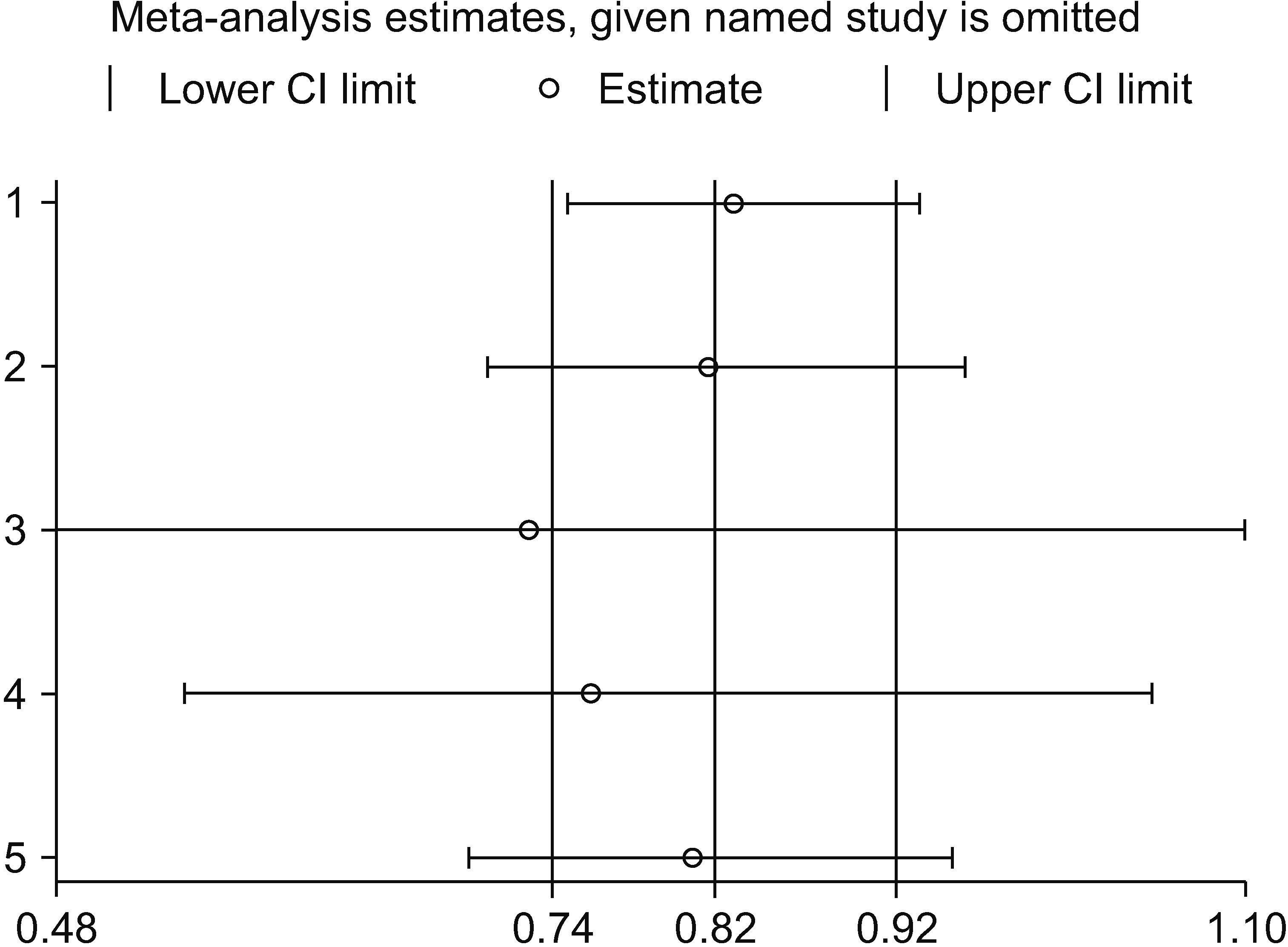J Rheum Dis.
2024 Apr;31(2):108-115. 10.4078/jrd.2023.0059.
Urate-lowering therapy is associated with a reduced risk of arrhythmias: a systematic review and meta-analysis
- Affiliations
-
- 1Department of Medicine, MetroWest Medical Center, Tufts University School of Medicine, Framingham, MA, USA
- 2Department of Internal Medicine, University of Hawaii, Honolulu, HI, USA
- 3Department of Medicine, Srinakharinwirot University, Bangkok, Thailand
- 4Department of Cardiology, Loma Linda University Medical Center, Loma Linda, CA, USA
- KMID: 2554326
- DOI: http://doi.org/10.4078/jrd.2023.0059
Abstract
Objective
While urate-lowering therapy (ULT) is linked to increased cardioprotective benefits on primary prevention of cardiovascular events such myocardial infarction or heart failure, little is known regarding their effects on arrhythmia risk. The purpose of this study was to investigate the relationship between incident arrhythmias and ULT.
Methods
We searched MEDLINE and Embase from inception to May 2023. Included studies were randomized controlled trials and cohort studies that compared the risk of cardiac arrhythmias among ULT users with non-ULT users.
Results
A total of 12,420 patients from five studies were analyzed, comprising 7,359 subjects in the ULT group and 5,061 subjects in the non-ULT group. Our results showed that ULT users had significant reductions in the risk of arrhythmias (pooled relative risk [RR] 0.82, 95% confidence interval [CI]: 0.74~0.92, p<0.001, I2 =0.0%) compared to non-ULT users. Subgroup analysis did not show that ULT users had a significant reduced risk of atrial fibrillation (pooled RR 0.76, 95% CI: 0.54~1.05, p=0.096 with I2 =15.4%) compared to non-ULT users.
Conclusion
ULT is associated with lower risk of overall arrhythmias. Further studies are warranted to confirm our findings.
Keyword
Figure
Reference
-
1. Kushiyama A, Nakatsu Y, Matsunaga Y, Yamamotoya T, Mori K, Ueda K, et al. 2016; Role of uric acid metabolism-related inflammation in the pathogenesis of metabolic syndrome components such as atherosclerosis and nonalcoholic steatohepatitis. Mediators Inflamm. 2016:8603164. DOI: 10.1155/2016/8603164. PMID: 28070145. PMCID: PMC5192336.
Article2. Polito L, Bortolotti M, Battelli MG, Bolognesi A. 2021; Xanthine oxidoreductase: a leading actor in cardiovascular disease drama. Redox Biol. 48:102195. DOI: 10.1016/j.redox.2021.102195. PMID: 34844041. PMCID: PMC8636850.
Article3. Gherghina ME, Peride I, Tiglis M, Neagu TP, Niculae A, Checherita IA. 2022; Uric acid and oxidative stress-relationship with cardiovascular, metabolic, and renal impairment. Int J Mol Sci. 23:3188. DOI: 10.3390/ijms23063188. PMID: 35328614. PMCID: PMC8949471.
Article4. Yu MA, Sánchez-Lozada LG, Johnson RJ, Kang DH. 2010; Oxidative stress with an activation of the renin-angiotensin system in human vascular endothelial cells as a novel mechanism of uric acid-induced endothelial dysfunction. J Hypertens. 28:1234–42. DOI: 10.1097/HJH.0b013e328337da1d.
Article5. Sautin YY, Nakagawa T, Zharikov S, Johnson RJ. 2007; Adverse effects of the classic antioxidant uric acid in adipocytes: NADPH oxidase-mediated oxidative/nitrosative stress. Am J Physiol Cell Physiol. 293:C584–96. Erratum in: Am J Physiol Cell Physiol 2010;299:C726. DOI: 10.1152/ajpcell.00600.2006. PMID: 17428837.
Article6. Johnson RJ, Bakris GL, Borghi C, Chonchol MB, Feldman D, Lanaspa MA, et al. 2018; Hyperuricemia, acute and chronic kidney disease, hypertension, and cardiovascular disease: report of a scientific workshop organized by the National Kidney Foundation. Am J Kidney Dis. 71:851–65. DOI: 10.1053/j.ajkd.2017.12.009. PMID: 29496260. PMCID: PMC7286363.
Article7. Verdecchia P, Schillaci G, Reboldi G, Santeusanio F, Porcellati C, Brunetti P. 2000; Relation between serum uric acid and risk of cardiovascular disease in essential hypertension. The PIUMA study. Hypertension. 36:1072–8. DOI: 10.1161/01.HYP.36.6.1072. PMID: 11116127.
Article8. Deng Y, Liu F, Yang X, Xia Y. 2021; The key role of uric acid in oxidative stress, inflammation, fibrosis, apoptosis, and immunity in the pathogenesis of atrial fibrillation. Front Cardiovasc Med. 8:641136. DOI: 10.3389/fcvm.2021.641136. PMID: 33718459. PMCID: PMC7952317.
Article9. Yamada S, Suzuki H, Kamioka M, Kamiyama Y, Saitoh S, Takeishi Y. 2012; Uric acid increases the incidence of ventricular arrhythmia in patients with left ventricular hypertrophy. Fukushima J Med Sci. 58:101–6. DOI: 10.5387/fms.58.101. PMID: 23237865.
Article10. Lee TM, Lin SZ, Chang NC. 2016; Effects of urate-lowering agents on arrhythmia vulnerability in post-infarcted rat hearts. J Pharmacol Sci. 131:28–36. DOI: 10.1016/j.jphs.2016.03.009. PMID: 27129614.
Article11. Singh JA, Yu S. 2017; Allopurinol and the risk of atrial fibrillation in the elderly: a study using Medicare data. Ann Rheum Dis. 76:72–8. DOI: 10.1136/annrheumdis-2015-209008. PMID: 27165177.
Article12. Tabayashi K, Suzuki Y, Nagamine S, Ito Y, Sekino Y, Mohri H. 1991; A clinical trial of allopurinol (Zyloric) for myocardial protection. J Thorac Cardiovasc Surg. 101:713–8. DOI: 10.1016/S0022-5223(19)36703-0. PMID: 2008110.
Article13. Wells G, Shea B, O'Connell D, Peterson J, Welch V, Losos M, et al. 2000. Newcastle-Ottawa Scale (NOS) for assessing the quality of nonrandomised studies in meta-analyses. Ottawa Hospital Research Institute;Ottawa:14. Sterne JAC, Savović J, Page MJ, Elbers RG, Blencowe NS, Boutron I, et al. 2019; RoB 2: a revised tool for assessing risk of bias in randomised trials. BMJ. 366:l4898. DOI: 10.1136/bmj.l4898. PMID: 31462531.
Article15. DerSimonian R, Laird N. 1986; Meta-analysis in clinical trials. Control Clin Trials. 7:177–88. DOI: 10.1016/0197-2456(86)90046-2. PMID: 3802833.
Article16. Kojima S, Uchiyama K, Yokota N, Tokutake E, Wakasa Y, Hiramitsu S, et al. 2022; Optimal uric acid levels by febuxostat treatment and cerebral, cardiorenovascular risks: post hoc analysis of a randomized controlled trial. Rheumatology (Oxford). 61:2346–59. DOI: 10.1093/rheumatology/keab739. PMID: 34605897.17. Rashid MA, William-Olsson G. 1991; Influence of allopurinol on cardiac complications in open heart operations. Ann Thorac Surg. 52:127–30. DOI: 10.1016/0003-4975(91)91433-V. PMID: 2069440.
Article18. Tai CJ, Wu CC, Lee KT, Tseng TG, Wang HC, Chang FR, et al. 2022; The impact of urate-lowering therapy in post-myocardial infarction patients: insights from a population-based, propensity score-matched analysis. Clin Pharmacol Ther. 111:655–63. DOI: 10.1002/cpt.2473. PMID: 34719019. PMCID: PMC9298734.
Article19. Gao Z, Shi H, Xu W, Guan Z, Su X, Guo N, et al. 2022; Hyperuricemia increases the risk of atrial fibrillation: a systematic review and meta-analysis. Int J Endocrinol. 2022:8172639. DOI: 10.1155/2022/8172639. PMID: 36046801. PMCID: PMC9420608.
Article20. Anzai N, Ichida K, Jutabha P, Kimura T, Babu E, Jin CJ, et al. 2008; Plasma urate level is directly regulated by a voltage-driven urate efflux transporter URATv1 (SLC2A9) in humans. J Biol Chem. 283:26834–8. Erratum in: J Biol Chem 2008;283:32152. DOI: 10.1016/S0021-9258(20)56959-7.
Article21. Mandurino-Mirizzi A, Crimi G, Raineri C, Pica S, Ruffinazzi M, Gianni U, et al. 2018; Elevated serum uric acid affects myocardial reperfusion and infarct size in patients with ST-segment elevation myocardial infarction undergoing primary percutaneous coronary intervention. J Cardiovasc Med (Hagerstown). 19:240–6. DOI: 10.2459/JCM.0000000000000634. PMID: 29470249.
Article22. Liang X, Zhang Q, Wang X, Yuan M, Zhang Y, Xu Z, et al. 2018; Reactive oxygen species mediated oxidative stress links diabetes and atrial fibrillation. Mol Med Rep. 17:4933–40. DOI: 10.3892/mmr.2018.8472. PMID: 29393403. PMCID: PMC5865952.
Article23. D'Oria R, Schipani R, Leonardini A, Natalicchio A, Perrini S, Cignarelli A, et al. 2020; The role of oxidative stress in cardiac disease: from physiological response to injury factor. Oxid Med Cell Longev. 2020:5732956. DOI: 10.1155/2020/5732956. PMID: 32509147. PMCID: PMC7244977.24. Xu D, Murakoshi N, Tajiri K, Duo F, Okabe Y, Murakata Y, et al. 2021; Xanthine oxidase inhibitor febuxostat reduces atrial fibrillation susceptibility by inhibition of oxidized CaMKII in Dahl salt-sensitive rats. Clin Sci (Lond). 135:2409–22. DOI: 10.1042/CS20210405. PMID: 34386810.
Article25. Noman A, Ang DS, Ogston S, Lang CC, Struthers AD. 2010; Effect of high-dose allopurinol on exercise in patients with chronic stable angina: a randomised, placebo controlled crossover trial. Lancet. 375:2161–7. DOI: 10.1016/S0140-6736(10)60391-1. PMID: 20542554.
Article26. Beattie CJ, Fulton RL, Higgins P, Padmanabhan S, McCallum L, Walters MR, et al. 2014; Allopurinol initiation and change in blood pressure in older adults with hypertension. Hypertension. 64:1102–7. DOI: 10.1161/HYPERTENSIONAHA.114.03953. PMID: 25135183.
Article27. Rekhraj S, Gandy SJ, Szwejkowski BR, Nadir MA, Noman A, Houston JG, et al. 2013; High-dose allopurinol reduces left ventricular mass in patients with ischemic heart disease. J Am Coll Cardiol. 61:926–32. DOI: 10.1016/j.jacc.2012.09.066. PMID: 23449426.
Article28. Sakabe M, Fujiki A, Sakamoto T, Nakatani Y, Mizumaki K, Inoue H. 2012; Xanthine oxidase inhibition prevents atrial fibrillation in a canine model of atrial pacing-induced left ventricular dysfunction. J Cardiovasc Electrophysiol. 23:1130–5. DOI: 10.1111/j.1540-8167.2012.02356.x. PMID: 22587612.
Article29. Chou HW, Chiu HT, Tsai CW, Ting IW, Yeh HC, Huang HC, et al. 2018; Comparative effectiveness of allopurinol, febuxostat and benzbromarone on renal function in chronic kidney disease patients with hyperuricemia: a 13-year inception cohort study. Nephrol Dial Transplant. 33:1620–7. DOI: 10.1093/ndt/gfx313. PMID: 29165620. PMCID: PMC5837776.
Article
- Full Text Links
- Actions
-
Cited
- CITED
-
- Close
- Share
- Similar articles
-
- An Introduction of the Systematic Review and Meta-Analysis
- Meta-epidemiology
- Critical Appraisal of Systematic Review/Meta-analysis
- A Systematic Review and Meta-Analysis of Music Therapy on Depression for Stroke Patients
- Non-pharmacological Intervention for Wandering Behavior in Dementia: A Systematic Review and Meta-analysis

